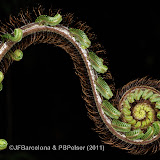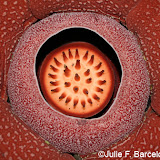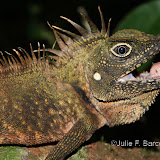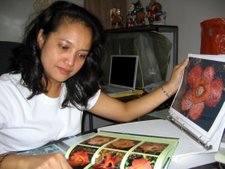DISCLAIMER!
This is a personal website, I am is solely responsible for all content. Resemblance to any person, institution, or event mentioned is purely coincidental.

Launched on 2 Aug. 2012 (sorry, not for sale)
David, M., A.C. de Jesus & J.F. Barcelona. 2011 (2012). Rafflesia of the Philippines: a Story of Adventure, Appetite, and Affinity. Energy Development Corporation (EDC). Manila. 180 pp.
Bringing the forests to your screen: Co's Digital Flora of the Philippines (CDFP)
Co's Digital Flora of the Philippines (www.philippineplants.org) is a website dedicated to the late Leonardo L. Co, honoring his lifetime contributions to Philippine Botany. It showcases the most updated checklist of Philippine vascular plants, an update of Merrill's Enumeration (1923-1926) and Leonard's work of a lifetime. The scientific names enumerated in this website are linked to high quality photographs (deposited at www.phytoimages.siu.edu) taken mostly by us and other CDFP team members (botanists, plant enthusiasts and citizen scientists). CDFP aims to continue Leonard's legacy, to provide a platform for learning and appreciating Philippine plants. In a country that harbors a large percentage of the world's vascular flora in a relatively miniscule area, it is imperative that its citizens know what's within their forests before they surrender them irreversibly to chainsaws, bulldozers, crushers, dynamite, and fire. Nearly 30% of the Philippine flora is found nowhere else in the world; most species inhabit the fast disappearing tropical rainforests. In showcasing the diversity in size, form, and color of the plants, we hope to give every Filipino the opportunity to appreciate the beauty of the Philippine forests and nourish the soul. Such awareness will hopefully translate into protecting the very source of our food, medicine, water, clothing, shelter, electricity, and minerals.
In an attempt to make the exchange of photos and names of Philippine plants dynamic and interactive, we created a Facebook group, Co's Digital Flora of the Philippines. This FB group is open to the public and members can post plant photos for identification or put names to uploaded photos of unknown plants.
Almost a third of Philippine vascular plants are currently represented by photographs and the statistics keep increasing as we scour our forests, grasslands, beach fronts, and yards documenting our flora. We hope that we can continue putting "faces" to the plant names that Leonard left behind.
In an attempt to make the exchange of photos and names of Philippine plants dynamic and interactive, we created a Facebook group, Co's Digital Flora of the Philippines. This FB group is open to the public and members can post plant photos for identification or put names to uploaded photos of unknown plants.
Almost a third of Philippine vascular plants are currently represented by photographs and the statistics keep increasing as we scour our forests, grasslands, beach fronts, and yards documenting our flora. We hope that we can continue putting "faces" to the plant names that Leonard left behind.
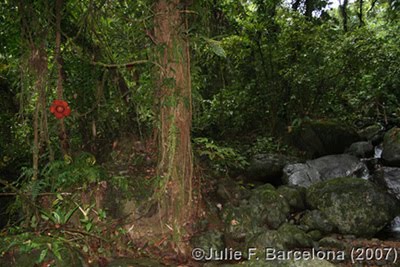
Rafflesia leonardi - honoring an unsung hero of Philippine Botany

PAALAM, may you have all the botanizing fun wherever you are . . .
The discovery of a new species of Rafflesia in the Sierra Madre Mountains of Northeastern Luzon in the Philippines was a timely occasion for us to honor the most knowledgeable person on Philippine plants, Leonardo L. Co. Leonard has made the study of plants his love and life. As a student, his botanical curiosity was triggered by the diversity of ferns in the Philippines. Later in life as a botanist of Conservation International-Philippines and U.P. Diliman, he expanded his interests towards seed plant diversity. He spent most of his botanical career studying the forests of Luzon’s Sierra Madre. Leonard’s enthusiasm has motivated many students in the Philippines to pursue a career in Botany. His attitude towards the sincere pursuit and sharing of his knowledge in Plant Taxonomy has put real meaning to the words biodiversity conservation, scientist, endemic, endangered, capacity-building, participatory, community . . . for this, he gained my highest respect as a person and scientist.
Rafflesia leonardi is the eight endemic species of Rafflesia described in the Philippines and the fourth for Luzon Island. A nearly smooth disk, a wide-open diaphragm reminiscent of R. manillana and R. lobata, and a size intermediate between the small and large-sized Rafflesia, are unique features of R. leonardi. The flowers are parasitic in the roots and areal parts of the host liana, Tetrastigma. Its bright orange-red flowers give life to the seemingly monotonous green and brown colors of a dense, dark tropical rainforest understory.
Sumper Aresta, an Agta native of the forests bordering Gattaran and Lallo Municipalities in Cagayan Province stumbled upon this beautiful flower as part of the initiatives by the Cagayan Valley Partners in People Development (CAVAPPED) headed by its Executive Director, Ms. Perla A. Visorro.
Rafflesia leonardi is the eight endemic species of Rafflesia described in the Philippines and the fourth for Luzon Island. A nearly smooth disk, a wide-open diaphragm reminiscent of R. manillana and R. lobata, and a size intermediate between the small and large-sized Rafflesia, are unique features of R. leonardi. The flowers are parasitic in the roots and areal parts of the host liana, Tetrastigma. Its bright orange-red flowers give life to the seemingly monotonous green and brown colors of a dense, dark tropical rainforest understory.
Sumper Aresta, an Agta native of the forests bordering Gattaran and Lallo Municipalities in Cagayan Province stumbled upon this beautiful flower as part of the initiatives by the Cagayan Valley Partners in People Development (CAVAPPED) headed by its Executive Director, Ms. Perla A. Visorro.
The Discovery of Rafflesia schadenbergiana in Central Mindanao
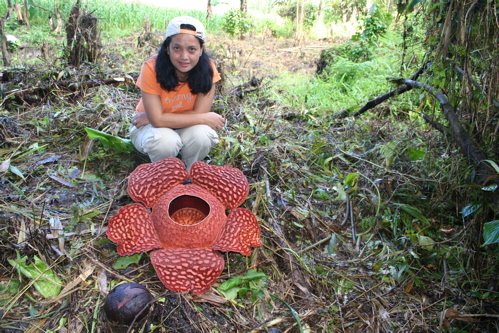
Measuring up to 80 cm in diameter, Rafflesia schadenbergiana, locally known as bó-o by the Bagobo tribe of Mindanao, is the largest flower of the Philippines and the third largest flower in the world. After its first discovery on the lower slopes of Mt. Apo in 1882 during an expedition led by Schadenberg and Koch, this rare treasure of Mindanao was not encountered again until Pascal Lays, a Belgian biologist, reported a population of R. schadenbergiana in South Cotabato Province in 1994. Recently, a new population has been found in Central Mindanao about 150 kilometers NNW of the locality where this species has first been found about 125 years ago. This population of R. schadenbergiana is unfortunately critically endangered, because it relies on a single Tetrastigma plant (the obligate host of Rafflesia species) found in a kaingin margin outside of the buffer zone of a protected area. The Rafflesia population is composed of several senescent flowers, buds, and fruits. Because of the vulnerability of this population to extinction, concerted conservation plan by the DENR, LGUs, scientists, and the local people should immediately be drafted.
Ongoing Projects
- Studies on Philippine Rafflesia: Phylogeny, Population Genetics, Genomics
- Co's Digital Flora of the Philippines
- Pictorial Guide to Philippine Ferns and Fern Allies
- Regional/Island Surveys of the Ferns and Fern Allies in the Philippines
- Electronic Databasing of Philippine fern collections in world herbaria
- Collection and Conservation Status of Philippine Endemic Ferns and Fern Allies

